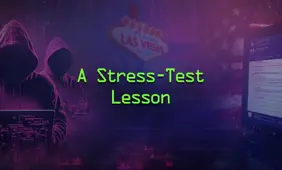Bluff Catcher in Poker – How to Spot the Bluffer at the Table

If you ask poker players which they enjoy more, pulling a big bluff or catching someone trying to pull one on them, the latter would probably end up being a winner.
Catching a bluff in poker provides a great feeling of "owning" your opponent, letting them know they can't mess with you. It also signals to the rest of the table that you're not the one they should try to bluff.
That said, because picking off bluffs is such a great feeling, many players get themselves in trouble overdoing it and making it their job to keep other players "honest."
Catching bluffs is definitely an important part of the overall poker strategy, but it's vital to know how to approach this aspect of the game and make correct decisions. Going by the feeling alone or relying on the fact that someone bluffs a lot won't be enough.
We already did an article on how to pull off a bluff in poker, but this time, I'll break down some of the most important aspects of bluff catching and emphasize certain things that you should consider before you press that call button or push your chips over the line.
What Is a Bluff Catcher in Poker?
Before we move on, let's first define what we're talking about when using the term bluff catcher or the act of bluff catching itself. Referencing our casino glossary you'll find that in a nutshell, this is the kind of hand that has some showdown value, but the only way you can realistically expect to win is if your opponent is bluffing.
Here's a simple example. There are four spades on the table by the river, and you have a 4s in your hand while facing a big, pot-sized bet from your opponent.
Your hand is a pure bluff-catcher. The only way you can win is if they're on a bluff, i.e., they don't have a flush themselves.
Of course, this is an extreme example, but it helps explain the term quite well. With that explanation out of the way, let's now look into some examples and theories behind bluff-catching and learn how to catch a bluff in poker.
When Their Story Doesn’t Make Sense
Some players believe that the only thing that matters when bluffing is how much money they put into the pot. They'll bet big on the flop, turn, and the river, with almost no regard for how the board texture changes.
Here's a hand example to show a case in point.
You open with Ad7d and face a big 3-bet from the big blind, who's a very aggressive player. You decide to take the flop in position, and the board comes 7c 6s 2d. They fire a big continuation bet, and you call with a top pair.
The turn now comes 4c, a card that should help you much more than them, but they fire another big bet. You're already suspicious as the hands they're representing, such as big pocket pairs primarily, would probably slow down at this point.
The river now comes 5h, and they move all-in almost instantly.
At this point, their story just doesn't make much sense. Sure, they could be overvaluing their pocket Aces, but most players would slow down at some point to control the pot and try to get to a showdown. With this action, they're basically representing the nuts on every street, which is simply impossible.
While it will sometimes happen that an aggressive player has picked a random hand to 3-bet with and somehow backed into the nuts, more often than not, these scenarios represent a perfect opportunity to bluff catch.
The story just doesn't make sense, and you have a decent hand that can beat random bluffs that somehow contain one of the smaller pairs.
Of course, this isn't the greatest spot you can be in, and making these types of calls is hard, even when you're almost certain your opponent is likely to bluff. But it's just something you have to do from time to time if you're up against an aggressive player and the line they took doesn't add up.
Holding a Blocker to the Nuts
In poker, blockers can be very valuable in different situations, and bluff catching is definitely one of them. In short, a blocker is a card that reduces or completely eliminates the possibility of your opponent holding a certain hand.
The best example of this is when you're holding an Ace of a particular suit, and there are three cards of that suit on the board. Your opponent may well have a flush, but you can know for certain that they don't have the nut flush as you're holding the key card.
So, how does this help you spot a bluffer? Let's look at another example.
You're dealt AdKs in the big blind. A player from the middle position opens, and you go for a big 4x 3-bet. They call, and you see the flop of Kd 9d 7s. You put in the standard c-bet, and they call. The turn comes an irrelevant 2s, and you fire another two-thirds pot bet. They call again. The river lands 2d, pairing the board and bringing in the flush. You check, and your opponent moves all-in for just over the pot. Is this a good time to bluff catch? I think so for several reasons.
First of all, your opponent is unlikely to have any sets in their range as those would likely raise the flop or the turn to protect against potential draws and get the maximum value while they know they're ahead.
They're pretty much representing a flush with the river shove, but you know that they couldn't have had the nut flush draw. Also, since Kd came on the flop, they didn't have a top pair and flush draw combo.
So, how do you deal with a bluffer? Knowing this and holding the key card in Ad is a great spot to make a call and pick up their bluff. They'll often show up with another missed draw, like TJ suited for a double gutter.
If you didn't have Ad, calling on the river would be much harder, as players are often sticky with their nut flush draws. In that case, their river shove would be much more credible, and there'd be much more reason to consider folding.
Random River Leads
While these aren't nearly as common as other scenarios described in this article, random river leads are some of my favorite bluff-catching spots.
This is the situation where you've had the betting lead throughout the hand, but when the river peels, for example, pairing the smallest card, your opponent decides to donk-bet into you. I'll often call with any hand that has some showdown value, even a decent Ace-high.
What they're saying is that now, all of a sudden, they have a big hand. But the river card couldn't have improved them, as it's virtually a brick. On top of that, with you betting two streets, if they did somehow have a big hand, why wouldn't they check again and let you fire for the third time?
More often than not, this is a desperate attempt to win a pot, which may work on occasion, but it's generally a bad play and a great spot to pick off a bluff and rake in a nice pot with some extra chips in it.
Summary
Hopefully, these tips on bluff catching will be of some use to you during your adventures on the felt. Developing a good sense of when to pick off bluffs and how to spot a bluffer at the tables can be a very important skill that will significantly improve your bottom line.
However, keep in mind that this is just another aspect of the game. Don't become too focused on bluff catchers to the point where you disregard other strategic aspects. You shouldn't be playing hands with the idea of catching bluffs. Instead, rely on your other poker skills and, when opportunities present themselves to catch someone with their hand in a cookie jar, go for it!





Review this Blog
Leave a Comment
User Comments
comments for Bluff Catcher in Poker – How to Spot the Bluffer at the Table